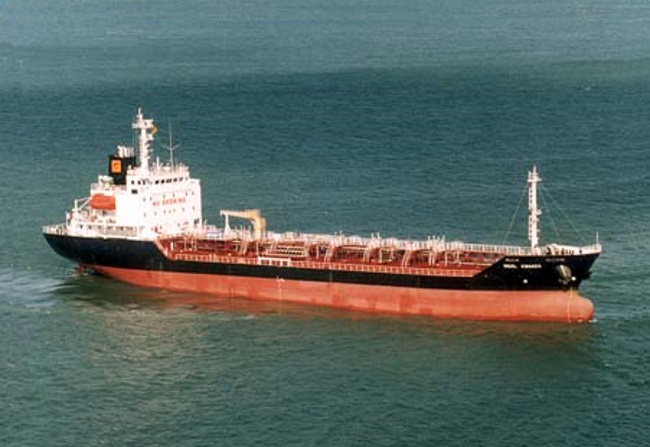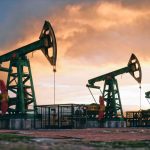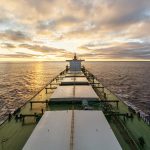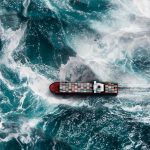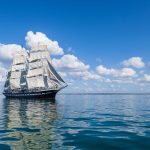When the International Hydrographic Organization (IHO) introduced S-57 in 1992, it marked a milestone in maritime history. For the first time, the industry had a unified standard for hydrographic data, laying the foundations for Electronic Navigational Charts (ENCs) and enabling safer, more efficient international trade.
More than 30 years later, the maritime community is preparing for another significant transition: the introduction of S-100, the IHO’s next-generation data framework. With S-100 compliant products expected to enter the market from 2026, this shift could unlock new possibilities for smarter, safer and more sustainable shipping.
- What is S-57?
S-57 is the current IHO standard used for the exchange of digital hydrographic data. It enabled the creation of ENCs and brought global consistency to how data such as water depths, coastline features and navigational hazards are captured and displayed. This standardization has helped mariners to operate safely and confidently across international waters, regardless of the vessel’s flag or region.
However, S-57 was designed in an era before modern data demands. It is optimized for static chart display and does not support the dynamic, layered information increasingly required by today’s digital bridges.
- What is S-100 – and why does it matter?
S-100 is a flexible, extensible data framework designed to support the future of navigation. Unlike S-57, which supports only ENCs, the S-100 framework can accommodate a wide variety of data types. These will be made available through compatible display systems such as an Electronic Chart Display and Information System (ECDIS), giving mariners richer situational awareness and supporting better decision-making.
Some of the types of data being developed under S-100 include:
- S-101: Electronic Navigational Chart: The successor to S-57 ENCs, S-101 forms the core of S-100’s chart display and provides the foundation to integrate additional layers of information.
- S-102 Bathymetric Surface: Offers a high-resolution bathymetric model of the seafloor and detailed depth data, essential for precision navigation in ports and other constrained waterways.
- S-104 Water Height: Provides real-time and predictable tidal data, enhancing safety and fuel efficiency.
- S-111 Surface Currents: Supplies information on current flow and direction, improving route optimization.
- S-122 Marine Protected Areas: Contains details on boundaries and regulations for environmentally sensitive zones.
Further datasets are also in development or under consideration as part of the S-100 series, including weather and ice information, reflecting the growing need for richer, real-time environmental data. As industry needs evolve, additional specifications may be added to support future navigation technologies.
When used together, these datasets could transform how mariners plan and execute voyages. For example, when S-104 tidal predictions are combined with S-102 bathymetric surfaces and displayed on S-101 charts, mariners can calculate dynamic under-keel clearance (DUKC) – factoring in changing tidal heights over time. This can help ships maximize cargo while maintaining safe clearance in shallow or constrained waters.
The commercial impact can be significant. For every additional 10cm of water identified through accurate S-100 data, a terminal may be able to load around 100 extra containers, potentially representing hundreds of thousands of dollars in added cargo value per vessel.
By bringing together both visible and previously inaccessible data in a machine-readable format, S-100 could also support greater automation and smarter voyage planning. In contrast to S-57, which relies on mariners interpreting charted features alongside separate sources for real-time conditions, S-100 is designed to bring these insights together. This could enable functions such as real-time safety contour updates, integration with onboard AI systems, and optimized routing based on tides, currents, and protected areas; ultimately supporting industry ambitions around decarbonization and digital transformation.
- Preparing for the transition
The shift to S-100 is already underway. From 2026, the first S-100 compliant products are expected to be available, with a transition period anticipated through to 2029. From that point, new ECDIS systems installed on ships will be required to support the S-100 framework in line with IMO regulations.
To ensure smooth and effective rollout, early engagement is essential. Hydrographic offices, technology providers, and training institutions all have a role to play in preparing the industry – both in producing these new datasets and ensuring end users are ready to benefit from them.
Just as S-57 once set the course for modern digital navigation, S-100 will shape the next generation of navigational data; offering a broader, richer view of the maritime environment and paving the way for smarter, safer and more sustainable shipping.
Source: The UK Hydrographic Office

